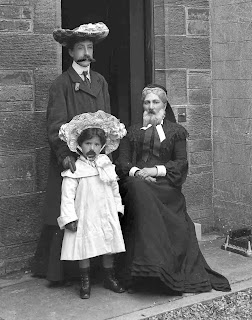Prime Minister David Lloyd George announced on 11 November 1918 that an armistice had been signed with Germany at five o’clock that morning. All hostilities were to cease at eleven o’clock that same morning. The Great War was over.
The first indication of this momentous news in Kirkwall was made public at around half past nine in the morning. At that time naval vessels in Kirkwall Harbour, who had been alerted by a wireless message from their headquarters, began to sound their sirens. The townspeople must have realised that something was afoot and, even though it was to be some hours before it was announced to the press, the streets of Kirkwall were soon the scene of mass celebrations. The bells of St. Magnus Cathedral rang out in accompaniment to the ship’s sirens, and flags and bunting were soon to be seen displayed on many of the buildings. The Town Council, probably recognising that there was not going to be much work done that day, announced that it was declaring a half day holiday.
In Scapa Flow, word soon spread from the British ships to Flotta. In an echo of the Kirkwall celebrations sirens were sounded, flags were unfurled and the minister himself rang the parish church bells.
In the evening of the first day of peace a hastily arranged service of thanksgiving was held in the cathedral, at which every minister in the town took part.
Following the armistice agreement there was a welcome relaxation of some of the restrictions placed upon the public during the war years. Among them, masking on street lights could now be removed, as could the shading of lights in houses and shops, except those visible from the sea. People were reminded, however, that there was still a shortage of coal throughout the country.
It would indeed have been a time of great joy and relief to people the world over. A great number of Orkney’s young men, nearly 600 in total, had lost their lives in the trenches and battlefields of Europe, but now the survivors would be coming home to their families.
Here are a few concert programmes from the Cromarty Hall, St Margaret's Hope, South Ronaldsay from 1922, 1923 and 1924.
And here is a photograph showing the people of Kirkwall observing Armistice Day in 1926.
Archive References: D1/155, TK730, TK731
















































